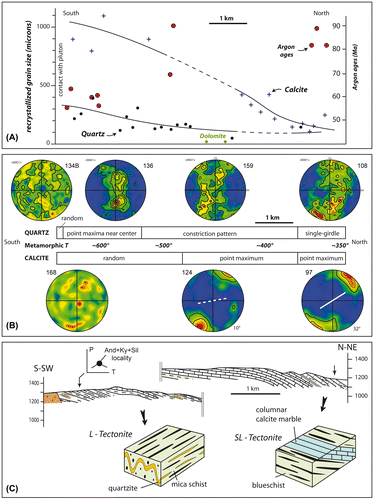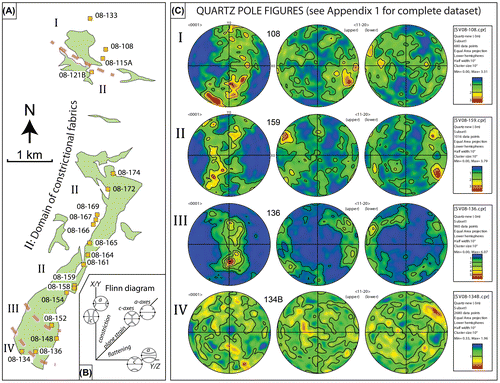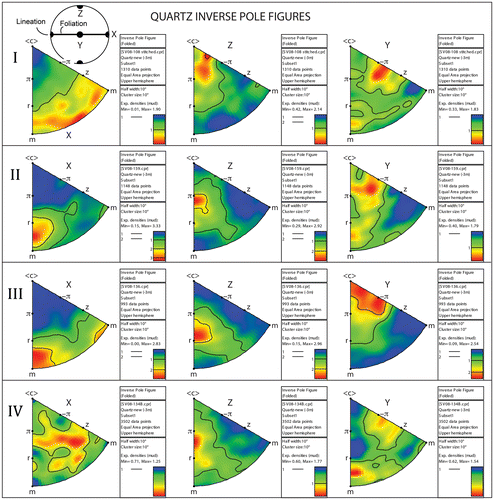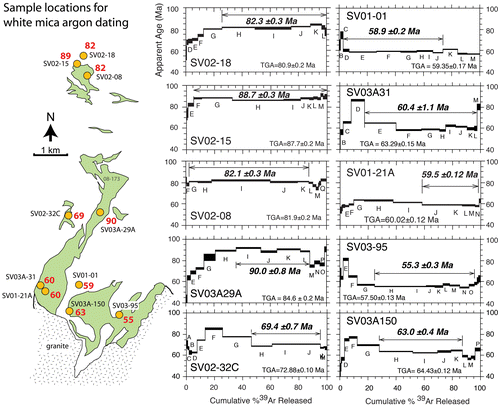Figures & data
Figure 1. (A) Location of the Tavşanlı Zone (TZ), the Afyon Zone (AF) and Sivrihisar (S) Massif in Turkey. (B) Simplified map of the Sivrihisar Massif showing the high-pressure (HP) domain to the northwest and at the northern tip of the southern submassif, and the Barrovian domain (+ granites) comprising most of the southern submassif. (C) P–T summary figure after Whitney et al. (Citation2011).

Figure 2. (A) Geologic map of the southern Sivrihisar submassif, with sample locations of quartzite and marble, as well as representative foliation and lineation data.
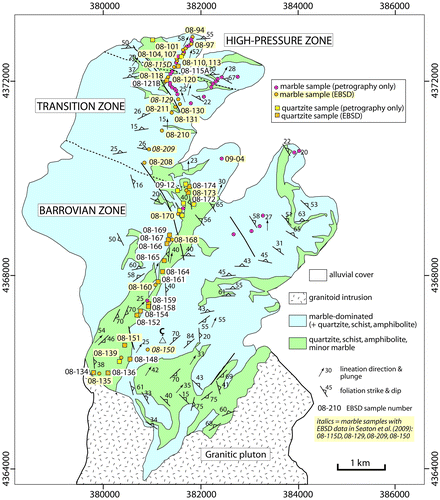
Figure 3. Photomicrographs showing representative microstructures in quartzite from the high-pressure domain preserved in the chlorite-zone of Barrovian sequence (A, B, C) and in the southern, amphibolite-facies portion of the Barrovian sequence (D, E, F). Photomicrographs in A, D, E and F correspond to samples in Figure (EBSD pole figures for quartz c-axis and a-axis).

Figure 4. Photomicrographs showing representative microstructures in marble. (A) Columnar texture in marble showing calcite rods oblique to mica foliation. (B) Partially recrystallized columnar calcite. (C) Completely recrystallized calcite aggregate in graphitic marble (D) showing pencil shape graphite rods. A, B and C correspond to sampled 101, 124 and 150, respectively, in Figure .

Table 1. Summary of 40Ar/39Ar data.
Figure 8. Transtension strain modeling results; (A) boundary conditions for the transtension model; (B) position of λ1; (C) field of likely solutions in the constriction region of the Flinn diagram; see text for discussion.
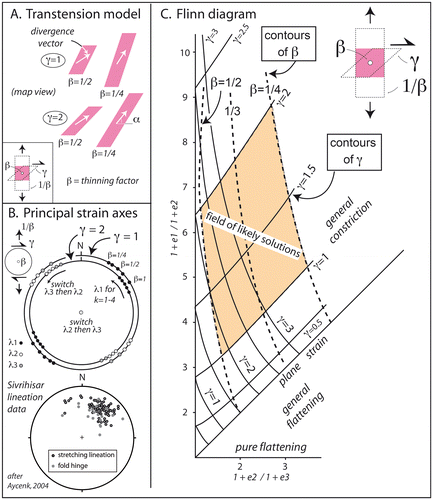
Figure 9. Transtension strain modeling showing (left) the stability fields of horizontal and vertical foliation as a function of the thinning factor and increasing finite strain (field of likely solutions in gray); (right) field of likely solutions shifted by the addition of a top-to-N shear that simulates unroofing of the Barrovian sequence.
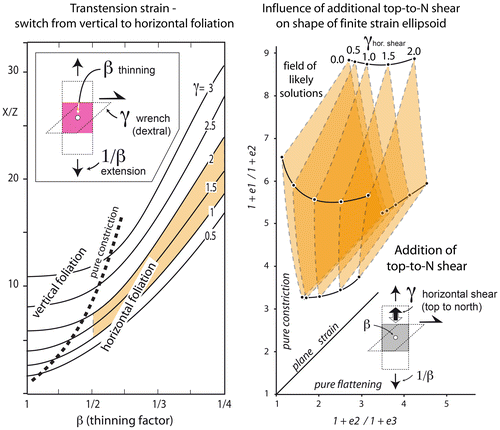
Figure 10. (A) Graph representing the evolution of recrystallized grain sizes in quartz and calcite as well as the distribution of 40Ar/39Ar ages; (B) Summary of fabric variations in quartz and calcite across southern Sivrihisar with approximate metamorphic temperatures recorded in the Barrovian sequence; (C) Cross section of field area (location, Figure ) and schematic block diagrams illustrating outcrop-scale strain relations (plane strain SL tectonite in north; constriction strain L-tectonite in south).
